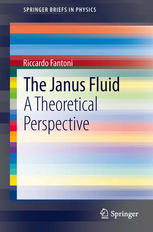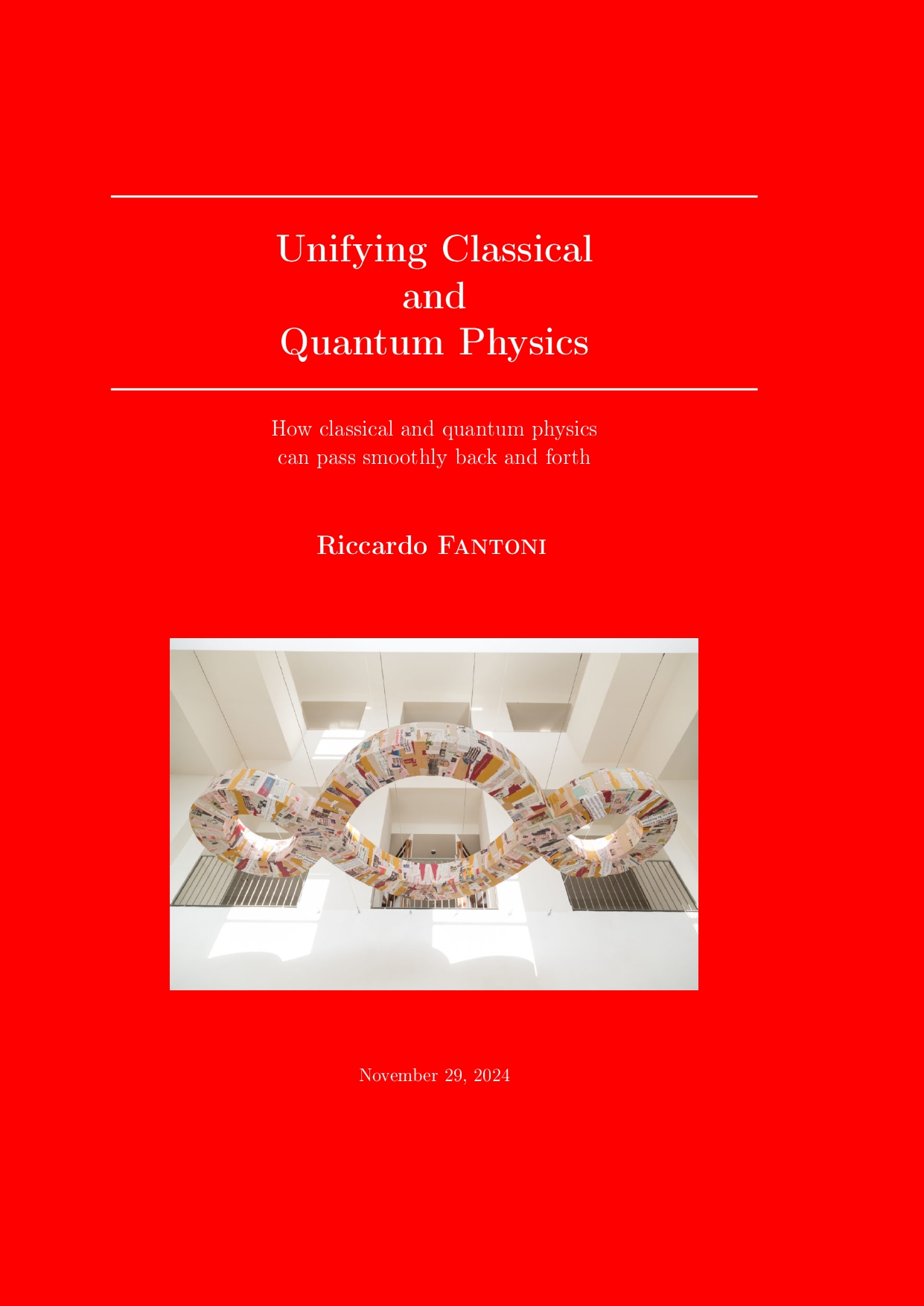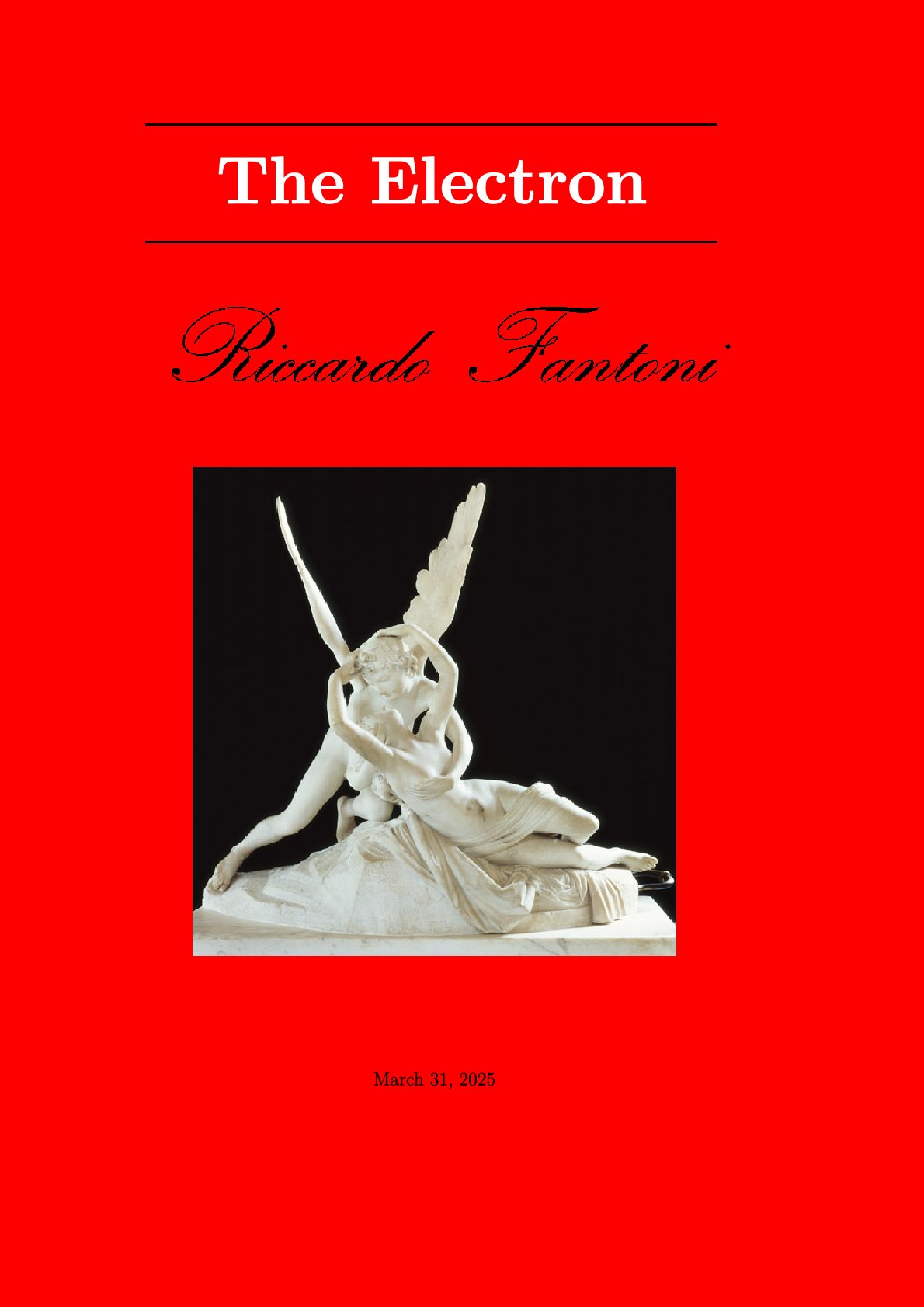I accomplish this bottom-up process either through analytical perturbative and non-perturbative tools and through Monte-Carlo simulations which are able to determine the exact numerical solution for the many-body equations underlying the microscopic physical system under study. I do this in the endless process of comparing theoretical results and predictions with Laboratory observations.
I am a Ph.D. from the Physics Department of the University of Trieste (Italy) and I worked in the Physics Departments of the University of Illinois at Urbana-Champaign (USA), of the University Ca' Foscari of Venice (Italy), and of the University of Stellenbosch (South-Africa).
Of particular interest to me is the concept of fluid, a particular realization of a microscopic many-body system, allowing for the gas, the liquid, and the solid phases. Fluids can either be found spontaneously in Nature or can be engineered in a Laboratory.
This brief book treats one particular fluid recently engineered in the Laboratory: "The Janus Fluid". The anisotropic interaction between two particles of this fluid allows for the formation of unconventional self-assembly where the stable clusters: the micelles and the vesicles, are weakly interacting among themselves. And this is responsible for the stability of the vapor phase at higher densities at low temperatures.
In the scientific method usually we observe two kinds of processes going in opposite directions. The process where starting from the observation of nature one develops the mathematical model of the given phenomenon, which often stimulated the development of mathematics itself. And the opposite feedback process where starting from the mathematical constraints, evolution or solution of a given model one develops the experiment necessary to observe in a laboratory or in nature the predicted phenomenon, which often stimulated the development of new technologies. Most often this second kind of process have had simply the scope of an imitation of nature in a laboratory, that is the reproduction of natural phenomena using the techniques at our disposal. More rarely it allowed to uncover, ``discover'', new phenomena not previously observed in a laboratory or in nature. In this book we collect some examples of the successful realization of this kind of discoveries occurred in the history of physics. We give 7 notorious examples which can be read one each day. So that the first part of the book can be read in one week. The book is intended both for the lay reader and for the more educated one. We couldn't avoid to use some equations and give for granted some basic knowledge in mathematics and physics. Even if we tried to extract only the strictly necessary equations to understand the mathematical constraints leading to the discovery, we found nevertheless necessary to show them because of their beauty and profound scientific meaning. The book is written so that it can be fully understood by a good graduate student in physics. But the less educated reader should not be scared by the equations and should try to grasp the meaning from the various descriptive and historical information surrounding them.
The second part of the book, the last two chapters, deals with the complex relationship between mathematics, the arts and philosophy and about some ontological and theological problems, like the anthropic principle, raised by the existence of mathematics as an exact science and physics as a basic, fundamental, hard, and empirical science. Is the beauty of mathematics a fruit of God or just of the human beings? This part of the book has a more popularization character and unlike the first part contains very few equations.
Canonical quantization has served well, but it cannot do many problems of interest. The example of the particle in a box fails its effort to deal with quantization using the standard canonical quantization. There is now a new quantization procedure, called "Affine Quantization"., which has been constructed and found to be a wonderful tool in solving problems not suitable for canonical quantization. In this case, is perfectly designed to handle the particle in the box. Not only quantum mechanics, can be treated perfectly, affine quantization is also the proper tool for fields and also for gravity.
This brief book is a complete, coherent, and possibly clear account of the 10 publications in collaboration with John Rider Klauder which originated from John idea of trying to understand numerically through path integral Monte Carlo and possibly find a solution to the triviality problem with for example the φ4 (euclidean) relativistic scalar field theory in 3+1 spacetime dimensions when canonical quantization is used to describe it. This triviality issue constitutes the core of the book and it is given account especially in Chapter 7. The first Chapters discuss instead the quantization procedure, alternative to the canonical one of Dirac, called ``affine'', which will prove very useful where and when the canonical one fails.

The electron is the main actor of this assay, a mysterious character and at the same time omnipresent in our daily life. At the same time elementary and complex. It is an elementary particle and as such is described by a vector, a wave function, of a finite dimensional irreducible unitary representation of its group of symmetries (the Galileo group in the non-relativistic case and the Poincare' group in the relativistic case, extended to the parity transformation). The invariants of the group are the mass and the spin and the electron has spin 1/2. The spin-statistics theorem states that, as a consequence of Lorentz invariance and of locality, half integer spin particles must obey to Fermi statistics and integer spin particles must obey to Bose statistics.
We go on presenting the properties of few electrons and their interactions among themselves and with the evironment. Its role in a ionic crystal in the Feyman polaron problem, in atomic structure in the Mendeleev periodic system, and in the redox chemical bond is discussed as few electron systems examples. The assay is continued with the properties of a many electrons system in its non-quantum version, the plasma, on curved surfaces, and in its fully quantum version, the Jellium, in flat d-dimensional space. Its gound state and finite temperature phase diagram are discussed from a (computational) theoretical point of view. Some phenomenology is also presented. The essay is then concluded with some properties of a white dwarf, a compact object of the universe that forms when a star dies, a stellar core remnant composed mostly of electron-degenerate matter. The last chapter is about the renormalization group theory of phase transitions in statistical physics.




